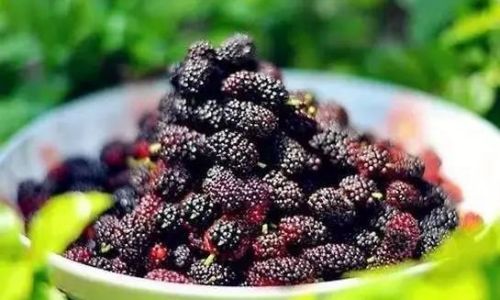Introduction
Mulberries, known scientifically as Morus species, are a delightful and nutritious fruit that has been cherished for centuries across various cultures. With their sweet, slightly tart flavor and vibrant purple hue, mulberries make a wonderful addition to desserts, jams, and even savory dishes. However, their short shelf life can be a challenge, especially for those who enjoy them in abundance during the brief harvest season. In this article, we will explore the various methods for preserving mulberries to ensure they stay fresh, delicious, and ready to enjoy throughout the year. From refrigeration and freezing to drying and canning, there are several techniques that can help extend the life of these delicate fruits.
Understanding Mulberry Freshness
Before diving into preservation methods, it’s crucial to understand what constitutes fresh mulberries. Fresh mulberries should be firm to the touch, with a deep, vibrant color that ranges from red to dark purple. They should also have a sweet aroma and a juicy, slightly tart taste. Once picked, mulberries begin to lose their freshness rapidly due to their high moisture content and delicate skin. Therefore, prompt handling and storage are essential to preserve their quality.

Refrigeration: The Quick Fix
One of the simplest and most effective ways to keep mulberries fresh is by refrigerating them. Here’s how you can do it:
-
Selection and Sorting: Start by selecting only the ripest, unblemished mulberries. Sort through your harvest, discarding any fruits that are moldy, bruised, or overly soft.
-
Gentle Handling: Mulberries are delicate, so handle them with care. Avoid crushing or squeezing the fruits, which can damage their skin and accelerate spoilage.
-
Proper Packaging: Place the sorted mulberries in an airtight container lined with a paper towel to absorb excess moisture. Alternatively, you can use a plastic storage bag with punctured holes for ventilation.
-
Temperature Control: Store the container in the refrigerator’s crisper drawer, where humidity is higher and temperatures are more stable. Avoid placing mulberries directly on the refrigerator shelves, as this can expose them to cold drafts that can damage their texture.
-
Consumption Window: Refrigerated mulberries should be consumed within 3-5 days to ensure optimal freshness.
Freezing: Capturing the Essence for Later
For those who want to enjoy mulberries beyond the short refrigeration window, freezing is an excellent option. Here’s a step-by-step guide to freezing mulberries:
-
Preparation: Rinse the mulberries gently under cold running water and pat them dry using a clean kitchen towel. Ensure they are completely dry before freezing to prevent ice crystals from forming.

-
Flash Freezing: Spread the mulberries in a single layer on a baking sheet lined with parchment paper. Place the sheet in the freezer for about 2-3 hours until the fruits are frozen solid. This step prevents the mulberries from sticking together when stored in a freezer bag.
-
Storage: Once flash-frozen, transfer the mulberries to an airtight freezer bag, removing as much excess air as possible. Label the bag with the date for future reference.
-
Longevity: Properly frozen mulberries can retain their flavor and texture for up to a year. When ready to use, thaw them overnight in the refrigerator or use them directly from frozen in smoothies, baked goods, or jams.
Drying: Preserving the Essence in a Concentrated Form
Dried mulberries offer a concentrated burst of flavor and can be enjoyed as a snack, added to trail mix, or used in baking. Here’s how to dry mulberries at home:
-
Cleaning and Preparation: Wash and pat dry the mulberries thoroughly. Remove any stems or leaves.
-
Dehydration: You can use a food dehydrator or your oven’s lowest setting to dry the mulberries. Spread them in a single layer on dehydrator trays or oven racks. In a dehydrator, set the temperature to around 135°F (57°C) and let them dry for 12-24 hours, depending on the humidity and the size of the fruits. In an oven, prop the door open slightly with a wooden spoon to allow moisture to escape and dry for about 24-36 hours, checking periodically to prevent over-drying.
-
Storage: Once fully dried, store the mulberries in an airtight container in a cool, dark place. They can last for several months if properly stored.
Canning: Preserving Mulberries in Syrup
Canning mulberries in syrup is another traditional method that preserves their flavor while adding a touch of sweetness. Here’s how to do it:

-
Preparation: Wash and dry the mulberries. Remove any stems or leaves.
-
Syrup Making: In a large pot, combine equal parts water and sugar (or honey for a healthier option) and bring to a boil, stirring until the sugar is fully dissolved. Reduce the heat to a simmer.
-
Packing: Pack the mulberries into clean, sterile canning jars, leaving about half an inch of headspace. Pour the hot syrup over the mulberries, ensuring they are completely submerged.
-
Sealing and Processing: Wipe the jar rims clean, apply lids and rings, and process in a boiling water canner for about 15-20 minutes, depending on jar size and altitude.
-
Storage: Once cooled, check for proper sealing by pressing the center of each lid. If it doesn’t pop up, the jar is sealed and can be stored in a cool, dark pantry for up to a year.
Conclusion
Preserving mulberries to maintain their freshness and flavor is a rewarding endeavor that allows you to enjoy these delightful fruits year-round. Whether you choose refrigeration, freezing, drying, or canning, each method offers its unique benefits and can be tailored to your specific needs and preferences. By following the tips and techniques outlined in this article, you can ensure that your mulberries stay fresh, delicious, and ready to be enjoyed in a variety of ways. Happy preserving!





0 comments